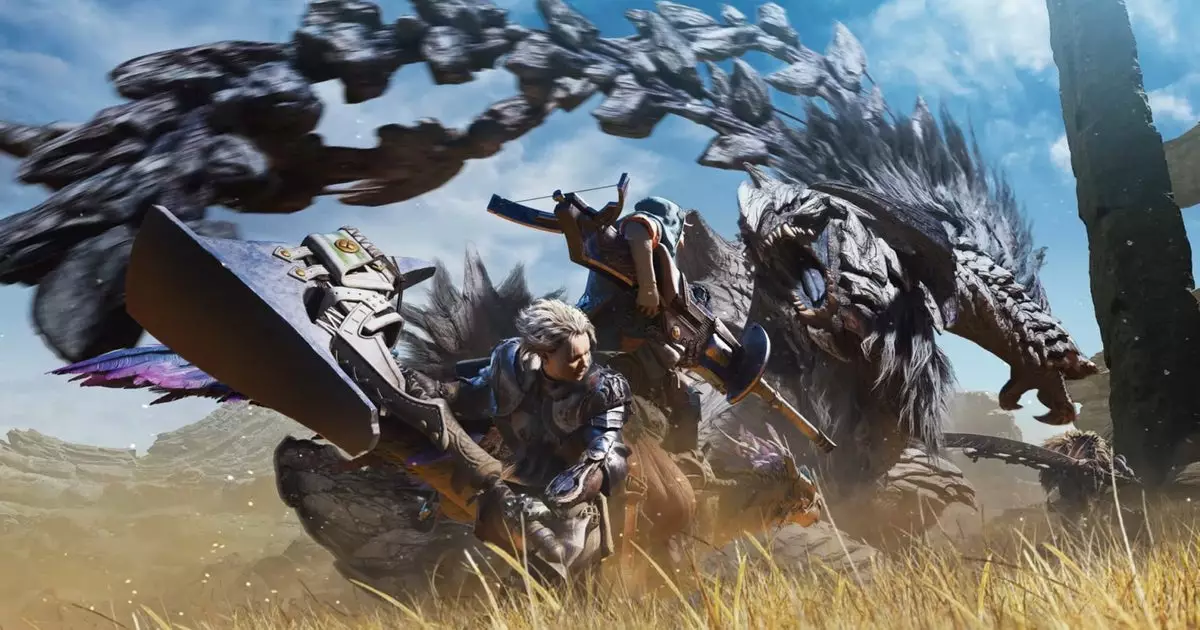In the sprawling wilderness of Monster Hunter Wilds, players encounter a diverse array of creatures and challenges, all while wielding weapons drawn from these fantastic beasts. However, despite the introduction of new monster types like the wyvern and arachnid, the weaponry system remains somewhat stagnant. This article delves into the nuances of the weapon evolution within the game, as well as the developers’ strategy of maintaining a familiar lineup rather than introducing new weapon types.
The Monster Hunter franchise has been renowned for its extensive arsenal, with each weapon type offering its own mechanics and play styles. Since its inception, the series has evolved, introducing newer weapons and refining older ones. The current iteration, Monster Hunter Wilds, incorporates familiar weapon categories reminiscent of previous titles like Monster Hunter Freedom 2, which debuted in 2007. This sense of nostalgia is palpable for long-time fans; however, it raises questions about the developers’ reluctance to innovate further in this area.
According to Yuya Tokuda, the director of Wilds, the development team’s current focus is on enhancing existing weapon types rather than creating entirely new categories. This decision stems from a desire to balance and fine-tune the current arsenal, keeping gameplay fresh without causing overlap between weapon classes. While this approach undoubtedly brings depth and complexity to the existing mechanics, it begs the question: Is there a risk of stagnation when new avenues for exploration remain unexplored?
Tokuda highlighted the inherent difficulty in conceptualizing a 15th weapon type that would occupy a distinctive space within the extensive lineup. The existing weapons range from the straightforward Greatsword to the analytically dynamic Hunting Horn; finding a niche for an additional weapon that feels equally valid can be a Herculean task. It’s a balancing act between introducing innovation and maintaining a cohesive combat experience that players have come to expect.
Moreover, the developers face the challenge of legacy. They must be cautious about overlaps with previously introduced weapons, creating an experience that feels redundant in terms of combat mechanics. This concern has led the team to favor incremental changes and rebalancing over more substantial innovations. While this may satisfy a portion of dedicated players who appreciate the refinements, it poses a dilemma for attracting newcomers seeking fresh experiences.
The shadow of Monster Hunter: World’s Iceborne expansion looms large over the development of Wilds. Iceborne was designed for a more skilled audience, introducing complex mechanics, additional combos, and strategic gameplay elements for weapons that were already deeply entrenched in the series’ lore. Tokuda’s acknowledgment of this influence indicates a delicate balancing act between meeting expectations for depth and accessibility.
This decision to prioritize the reworking of existing weaponry mirrors the franchise’s desire to cater to its loyal fanbase, who appreciate the subtleties of masterful execution using familiar tools. However, it raises concerns about whether this strategy can also captivate a newer audience who might expect the allure of novel weapon types to draw them into the game’s universe.
While the focus on refining the current weapon classes in Monster Hunter Wilds speaks to the developers’ dedication to providing a balanced and satisfying gameplay experience, there is an undeniable desire among fans and newcomers alike for greater innovation. The diversity of monsters in the game offers an untapped reservoir of creative possibilities for weapon design.
Imagining a more integrated approach, where teams of designers could collaborate to conceptualize weapons inspired by their monstrous counterparts, could reignite enthusiasm for weaponry in the franchise. The key lies in meshing creativity with the principles that have solidified Monster Hunter’s place in gaming history. By daring to explore new horizons—without sacrificing the essence of what makes Monster Hunter special—Capcom could usher in a new era of excitement for players, inviting both veterans and newcomers to embrace the hunt like never before.


Leave a Reply